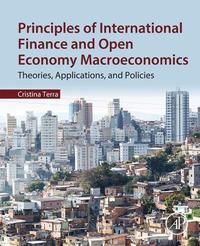Exercise 1 As has been seen throughout this chapter, political factors, such as government objectives and the
Question:
Exercise 1 As has been seen throughout this chapter, political factors, such as government objectives and the weight of sectors affected by exchange rate policy, are important elements that affect Chapter 11 • Political Economy of Exchange Rate Policy 325 the decision in regards to the exchange rate regime adopted by a country. In this context, answer what the following items request.
a. Discuss the costs and benefits of a fixed exchange rate system, identifying which groups benefit and which are harmed with the adoption of this type of regime.
b. Discuss the costs and benefits of a floating exchange rate system, identifying which groups benefit and which are harmed with the adoption of this type of regime.
c. Considering your answers to the previous items, in a country whose elected ruler holds a high degree of influence on economic policy and is committed to growth, what would be the most adequate exchange rate regime? Give examples of countries that possess this type of political structure, associating it with the exchange rate regime adopted.
d. Continuing within the context of the previous item, in a country whose elected ruler is committed to democratic institutions and is subject to political pressure that is fairly scattered among the economic sectors, what would be the most adequate exchange rate regime? Give examples of countries that possess this type of political structure, associating it with the adopted exchange rate regime.
e. Considering the strict relation between monetary policy and exchange rate policy, what type of institutional rule would you use to reduce political influence on the exchange rate? Explain your answer, presenting, if possible, examples of countries that have implemented institutional reforms of this nature.
Step by Step Answer:

Principles Of International Finance And Open Economy Macroeconomics Theories Applications And Policies
ISBN: 9780128022979
1st Edition
Authors: Cristina Terra






